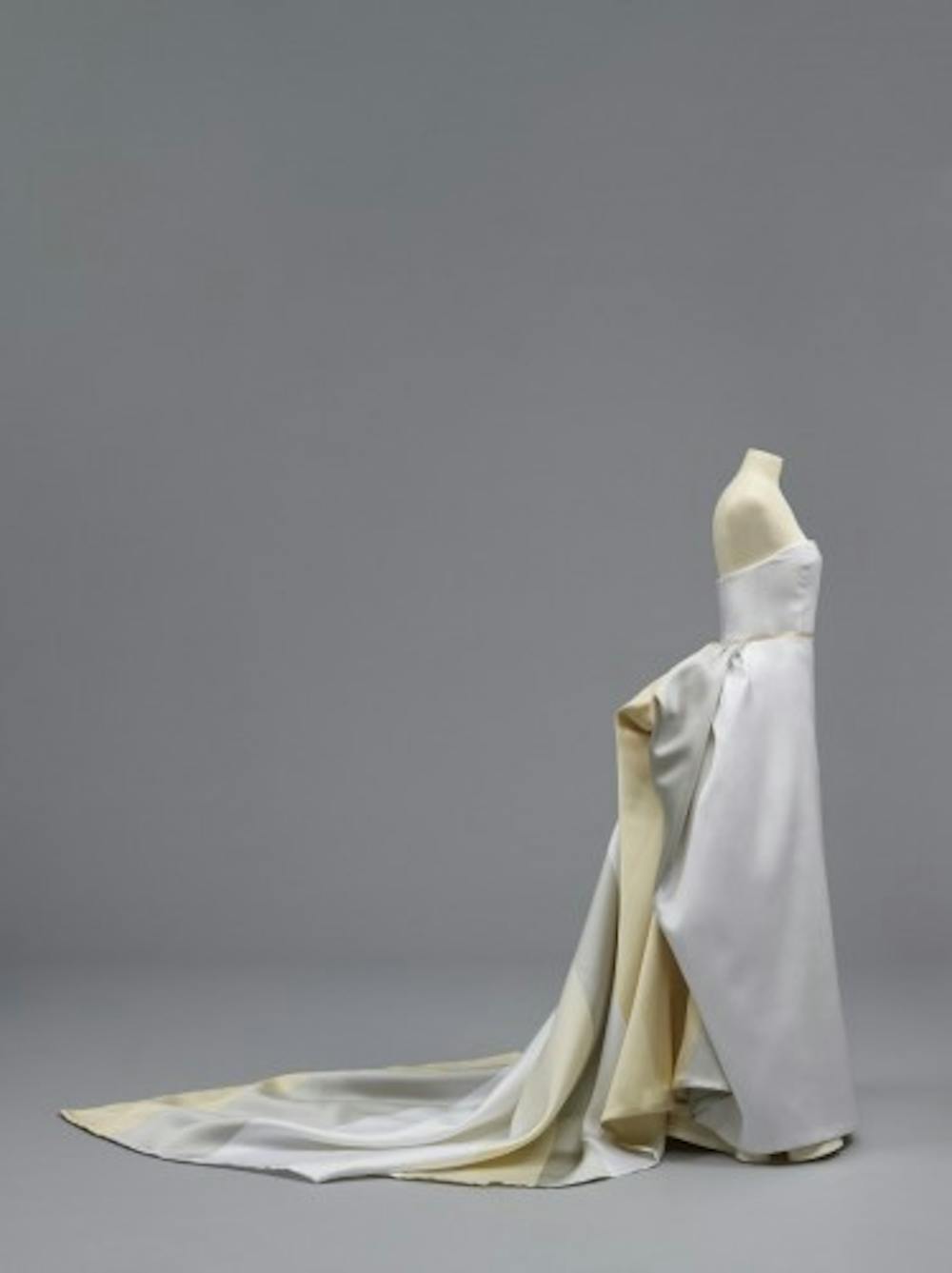My Uber driver was supposed to drop me off at the back of the Philadelphia Art Museum, but the signage was unclear, so he ended up stopping in front of the steps. As I got out of the car, I saw the giant poster hanging on the columns of the entrance enticing me to come and see the exhibit I was currently headed to: Fabulous Fashion: From Dior’s New Look to Now.
After I got into the museum, I spotted the sign for the exhibit and walked in. The first thing I saw was a video of runway shows, but I was too excited for the real dresses and didn’t stay for the whole thing. The first two outfits set the stage for the whole show. The ensembles were both by the brand Dior, but one was from spring 1948 and designed by Dior, while the other outfit was from fall/winter 1998 and designed by John Galliano for Christian Dior. The first ensemble was from Dior’s introduction of the revolutionary “New Look” and the second exemplified how much fashion changed in 50 years.
The rest of the exhibit is broken up into five sections: Shape & Volume, Embellishment, Color & Pattern, Metallics, Drape, and Bridal. There are also two cases: one of shoes and one of hats. Grouping the clothes into different categories allows for comparisons of designers, shape, and interpretation of different concepts. The sections also show how fashion has changed through time.
The first section I saw was Shape & Volume, which takes up the main exhibition room. It showcases amazing gowns: a purple tulle Oscar de la Renta from 2006, a Balenciaga black organza skirt with a white overdress from 1951, and a Chado Ralph Rucci stingray–inspired dress from 2001. A highly featured designer in the category is Pierre Cardin, who studied architecture, as shown in his sculptural dress designs.
Next, I walked to a display case full of extraordinary shoes and bags. Two things stood out to me: a pair of 2010 gold and black Manolo Blahnik ankle boots and a clear and gold Judith Leiber bag from the 1960s. The next labeled section in the exhibit was Embellishment. The dresses in the category showcase beading, feathers, and appliqué. One particular look that I liked was a cocktail dress by Peter Som for Bill Blass Ltd. from 2008, which showed amazing mixing of curly and straight feathers to create contrasting textures.
In the Color & Pattern section, I saw a beautiful shift dress designed by artist Ellsworth Kelly in 1952 that was reinterpreted 60 years later by Francesco Costa of Calvin Klein. Only a picture exists of the original. Then, I walked to the Metallics area and was blown away by Paco Rabanne’s 1966 dress made of plastic discs, linked by metal rings, and a Givenchy 1982 haute couture gold sequin and black tulle gown.
The next case held a lovely array of hats. One that stuck me was the "Tube" hat designed by Stephen Jones from 2008, which looked like the sign for the London underground. The Drape section featured a reconstructed, fraying, unfinished dress designed by Rei Kawakubo for Comme des Garçons. The last section of the Exhibit was Bridal, which has Grace Kelly’s wedding headpiece and shoes, as well as her bridal manual, which is covered with lace and accented with seed pearls.
Seven decades of fashion are represented in Fabulous Fashion: From Dior’s New Look to Now, which highlight how much styles have changed. The vast amount of unique garments highlight the Museum’s renowned collection of costumes and textiles. Many of the pieces in this show have been exhibited rarely, if ever before. For any lover of designer gowns, this show is a must–see, with pieces from both lesser–known and legendary designers. The choice of categories allows viewers to make connections between the different time periods, designs, and aesthetics of pieces. Fashion is an art, and the Philadelphia Art Museum does a great job of proving it.

